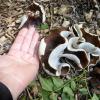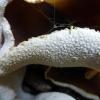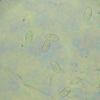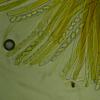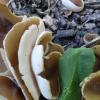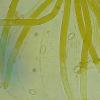
15-12-2025 15:48
 Danny Newman
Danny Newman
Melanospora cf. lagenaria on old, rotting, fallen

15-12-2025 15:54
 Johan Boonefaes
Johan Boonefaes
Unknown anamorph found on the ground in coastal sa

15-12-2025 21:11
 Hardware Tony
Hardware Tony
Small clavate hairs, negative croziers and IKI bb

15-12-2025 07:09
 Danny Newman
Danny Newman
indet. Rutstroemiaceae sp. on unk. fallen leavesMc

15-12-2025 07:05
 Danny Newman
Danny Newman
Pseudosclerococcum golindoi (det: Zotto)near Cosb

15-12-2025 11:49
 Danny Newman
Danny Newman
ITS sequences from the following two collections B

15-12-2025 12:34
 Danny Newman
Danny Newman
indet. Rhytismataceae on oak leafnear Purchase Roa

09-12-2025 12:06
 Andgelo Mombert
Andgelo Mombert
Bonjour,Je recherche l'article concernant Hypobryo
Can anyone help ID this Peziza please?
Spores are smooth 15-18 x 9-10µm. No guttules.
Asci only blue at very tip in Melzers.
Paraphyses slender, sparse and fragile. Simple, and septate with slightly inflated ends.
The brian Spooner key takes me to P.micropus, except these fruit bodies were very large (up to 150mm diameter)



can you explain or tell me literature on the complex Varia - repanda, cerea incl. muralis and micropus are difficult to separate and maybe the same. Where can I learn more?
Regards from Lothar (I fear I am not fully actual here ...)

here is the link to Karen Hansen's publication
http://dash.harvard.edu/bitstream/handle/1/3153301/Pfister_PhylogeneticDiversityCore.pdf?sequence=1
François

thank you very much!
I always thought that it is highly arbitrary to divide the varia-complex. Very nice!
Best regards from Lothar

thank you very much!
I always thought that it is highly arbitrary to divide the varia-complex. Very nice!
Best regards from Lothar

.. yes, the "old" P. varia ss. str. was defined with moliniform paraphyses. But this character, as others, seems to be highly variable and influenced by environmental conditions.
Regards from Lothar
